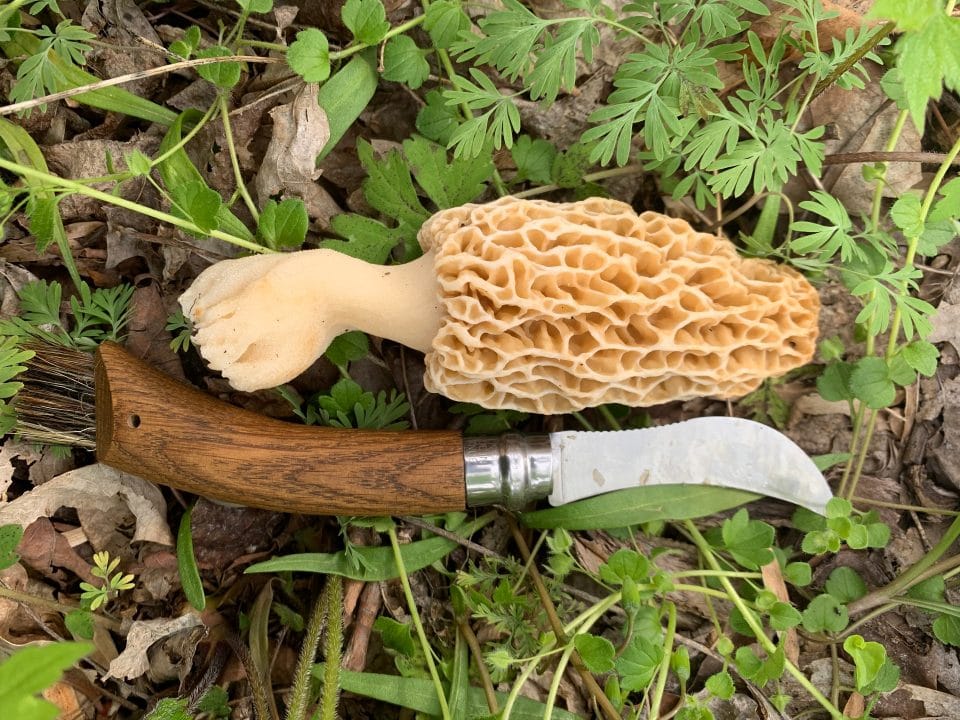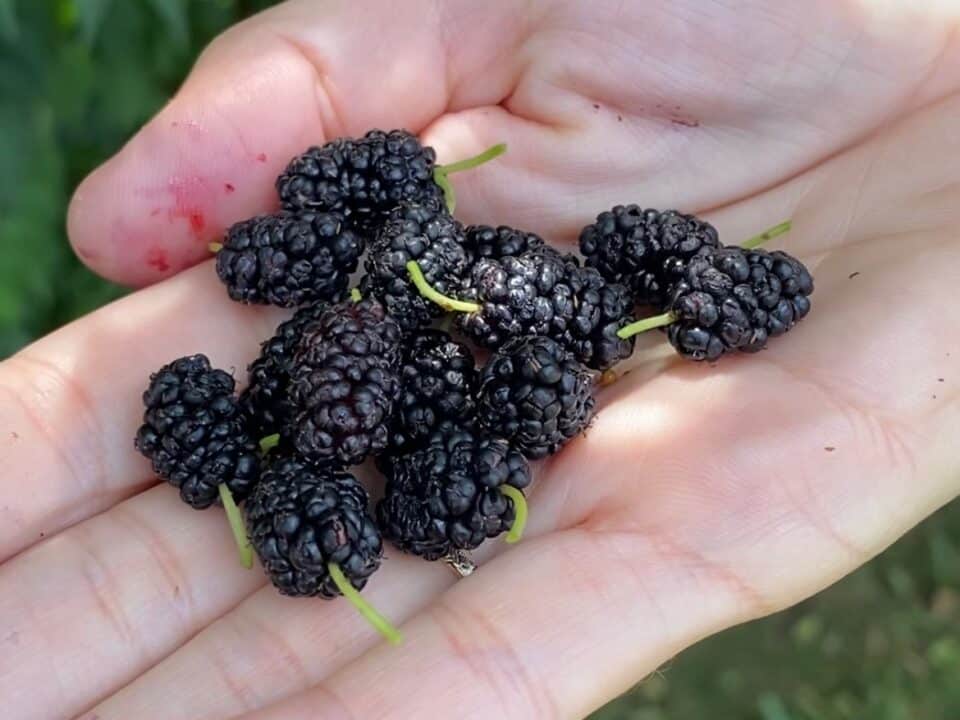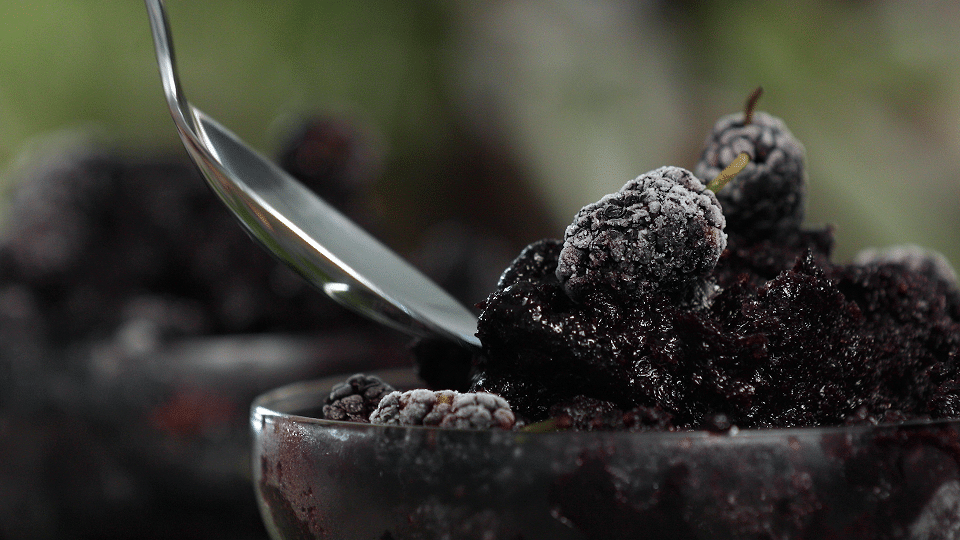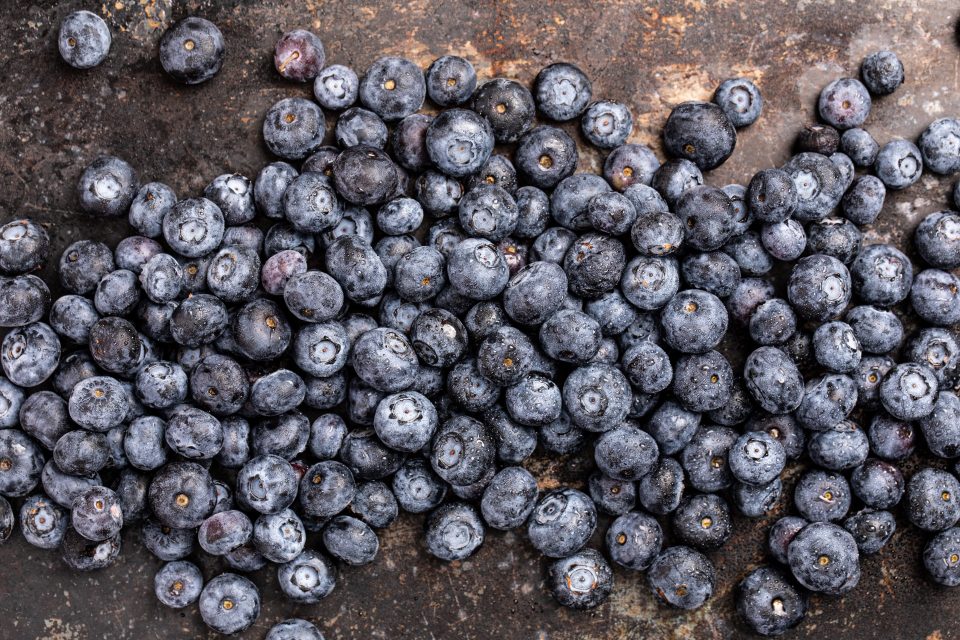To enjoy Pennsylvania elderberries is a labor of love. If you can beat the birds to them at peak ripeness, more steps remain. Elderberries grow by the dozens in clusters, requiring some TLC to remove each and every berry from its tiny stem. They’re not a pluck-and-eat berry, either. Raw elderberries are toxic, essentially a poison when uncooked. Elderberry goods, like syrup, jam and pie, also require quite a haul of these little globes. But, for those willing to boil and prepare this native fruit, the rewards are many! It’s chock-full of nutrients, potent antioxidants and has a unmistakable punchy, tart flavor that’s worth the work.
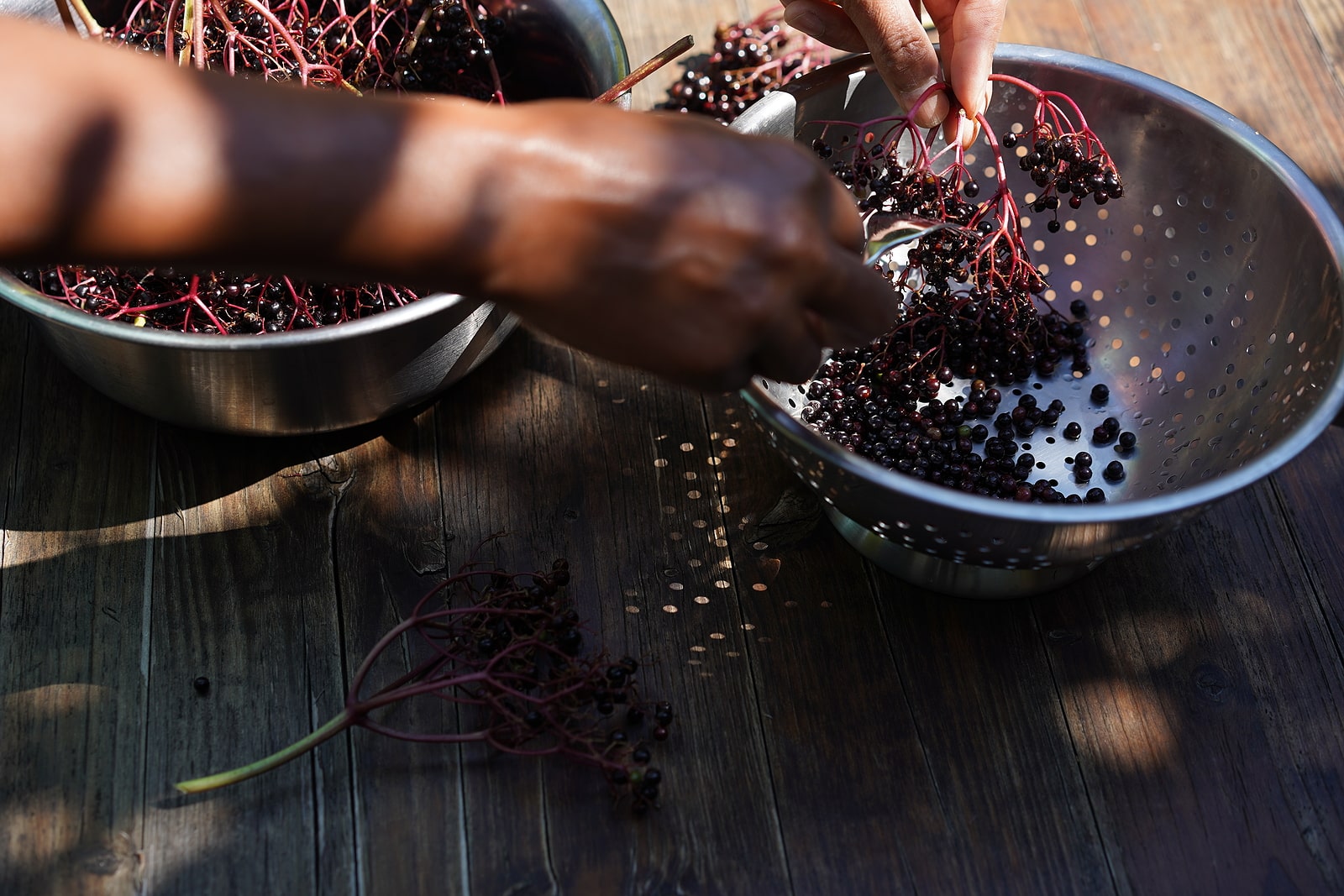
There are nine subspecies of elderberry, known as Sambucus, including black, red and blue varieties. The two most commonly found in Pennsylvania are the black elderberries. The native American black elderberry variety, Sambucus nigra ssp. canadensis, is generally the smaller of the two and grows fruit very easily. The non-native European black elder, Sambucus nigra ssp. nigra grows bigger and often needs a pollinator pair to produce any fruit. There’s also a Red elderberry, Sambucus racemosa and a Blue elderberry, Sambucus cerulea, but if you see elderberry in Pennsylvania, it is most likely a black variety.
The American elderberry is the one you’ll find out in the wild, and it grows throughout the whole state. Like other berries, it loves edges, growing next to forests and alongside creeks or ponds. It also prefers moist environments, like marshes, but can be found in dry areas as well.
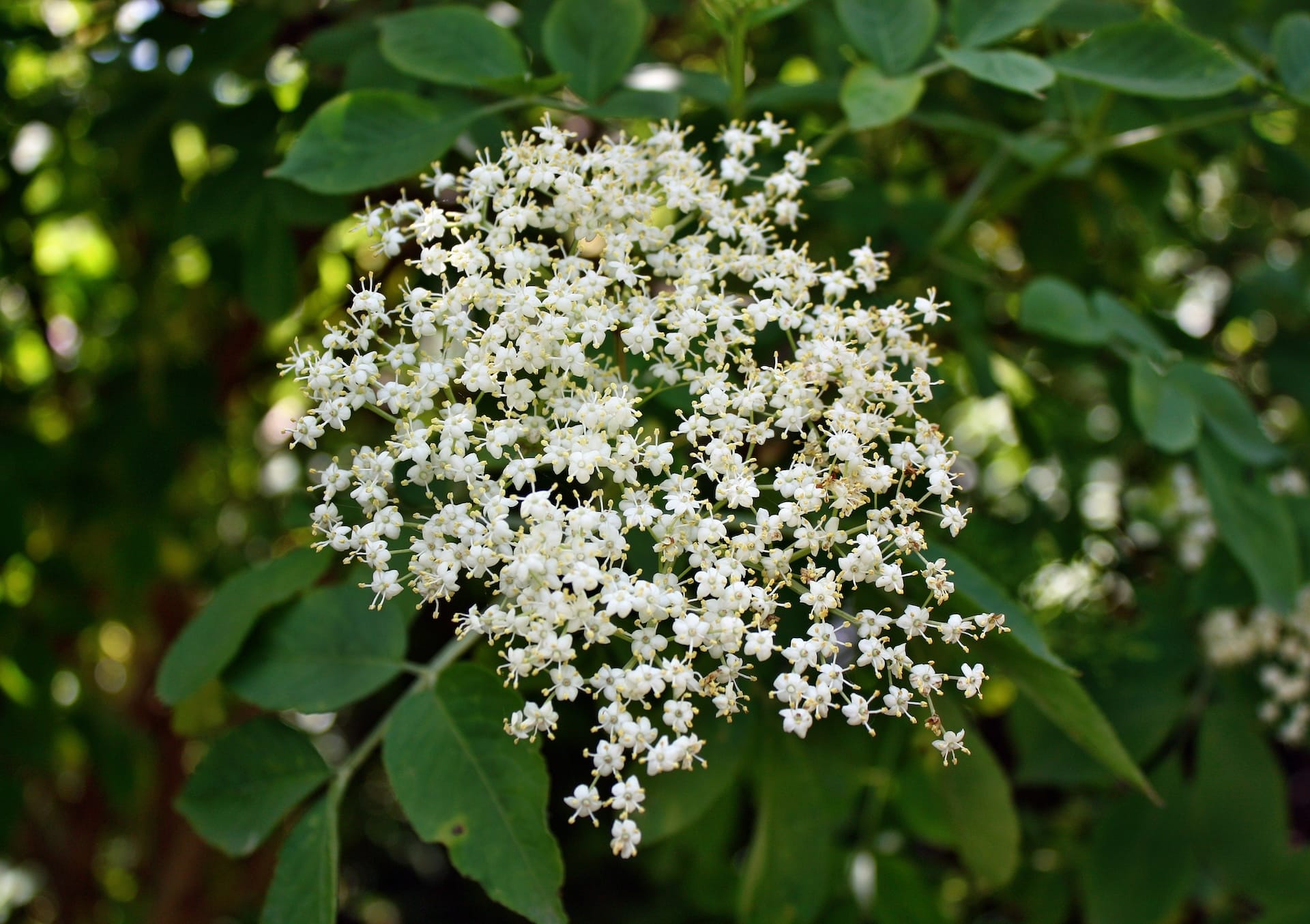
The elderberry is a tree-like shrub that trumpets outwards, quickly gaining almost as much width as height. It flowers in late spring and early summer, with flat saucer-sized and lace-like clusters of tiny white flowers that soon give way to berries. Its (many) stems have a large white pith inside that hollows as they age and die. These hollow stems were used to blow on kindling, hence the name “elder” or aeld, early Anglo-Saxon for “fire.” The genus name Sambucus came from an early Greek flute name, sambuce.
Elderberry’s lore doesn’t end there. It’s a storied medicinal plant that Hippocrates famously called his “medicine chest” for its variety of uses, like immune support, constipation relief, cardiovascular health and stress reduction. In the 18th Century, elderberries were widely used to treat heart disease, edema, colds and flu symptoms and constipation. Modern users appreciate elderberry’s antioxidants, immune-boosting vitamins and proven antiviral properties, taking it in popular syrup, tincture and gummy forms.
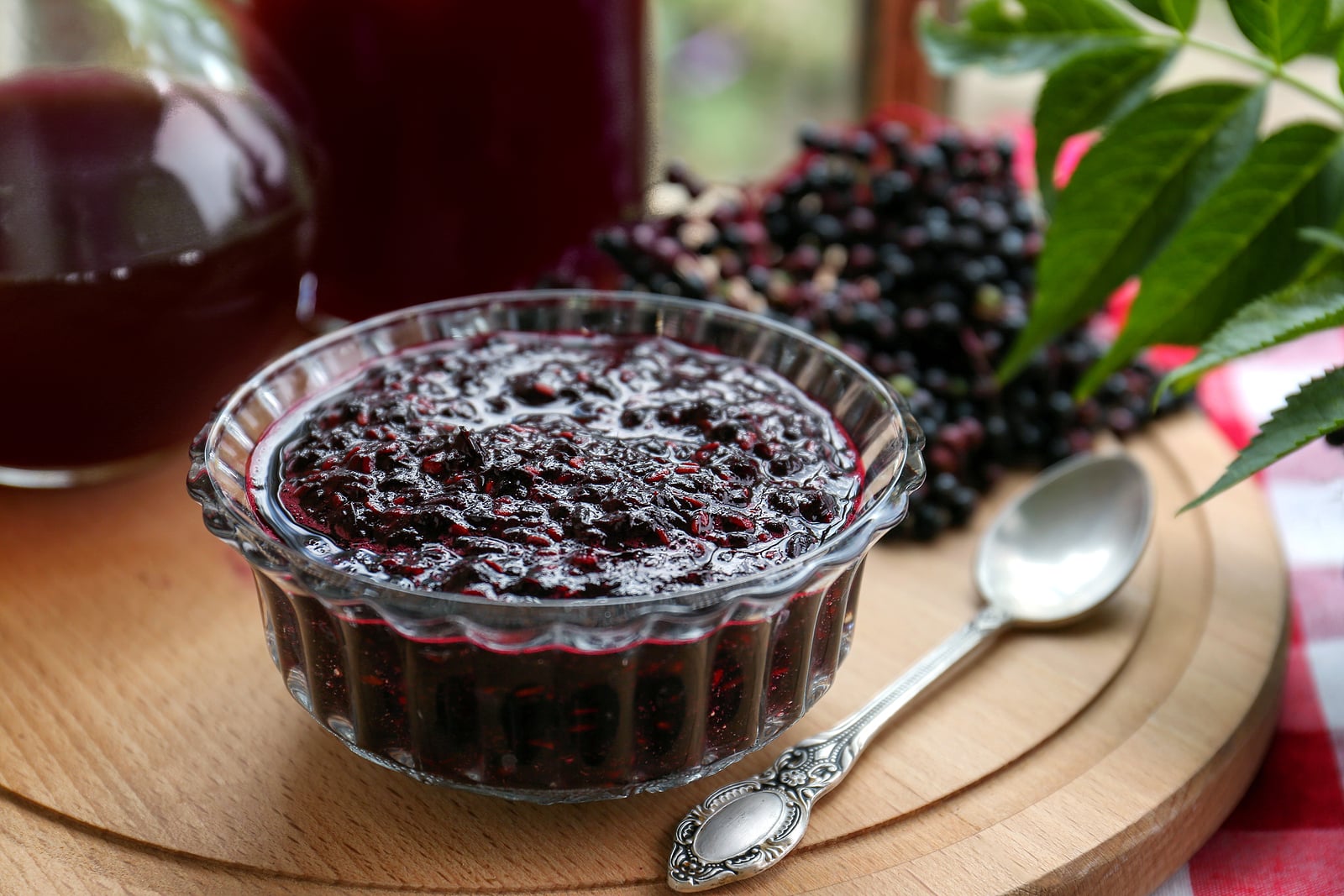
It’s very important to note that elderberries are toxic unless cooked. Consuming raw berries or other parts of the plant can cause serious gastrointestinal distress. However, the toxic compounds are destroyed by boiling the berries for about 30 minutes.
How to Forage Elderberries
To forage for elderberries, you must first locate an elderberry tree or bush. Forest edges, low fields and marshes are a great place to start. Many people have elderberries in their yards, though you’ll often find the more decorative European version, which does not fruit unless it has a pollinator companion tree. The American versions, however, produce berries annually all by themselves.
Once you have elderberries located, keep an eye out for the white lacy flowers around May or June, which little green berries will soon replace. As the berries ripen, they are a favorite treat of wildlife, like catbirds, but there’s sure to be plenty left for you.
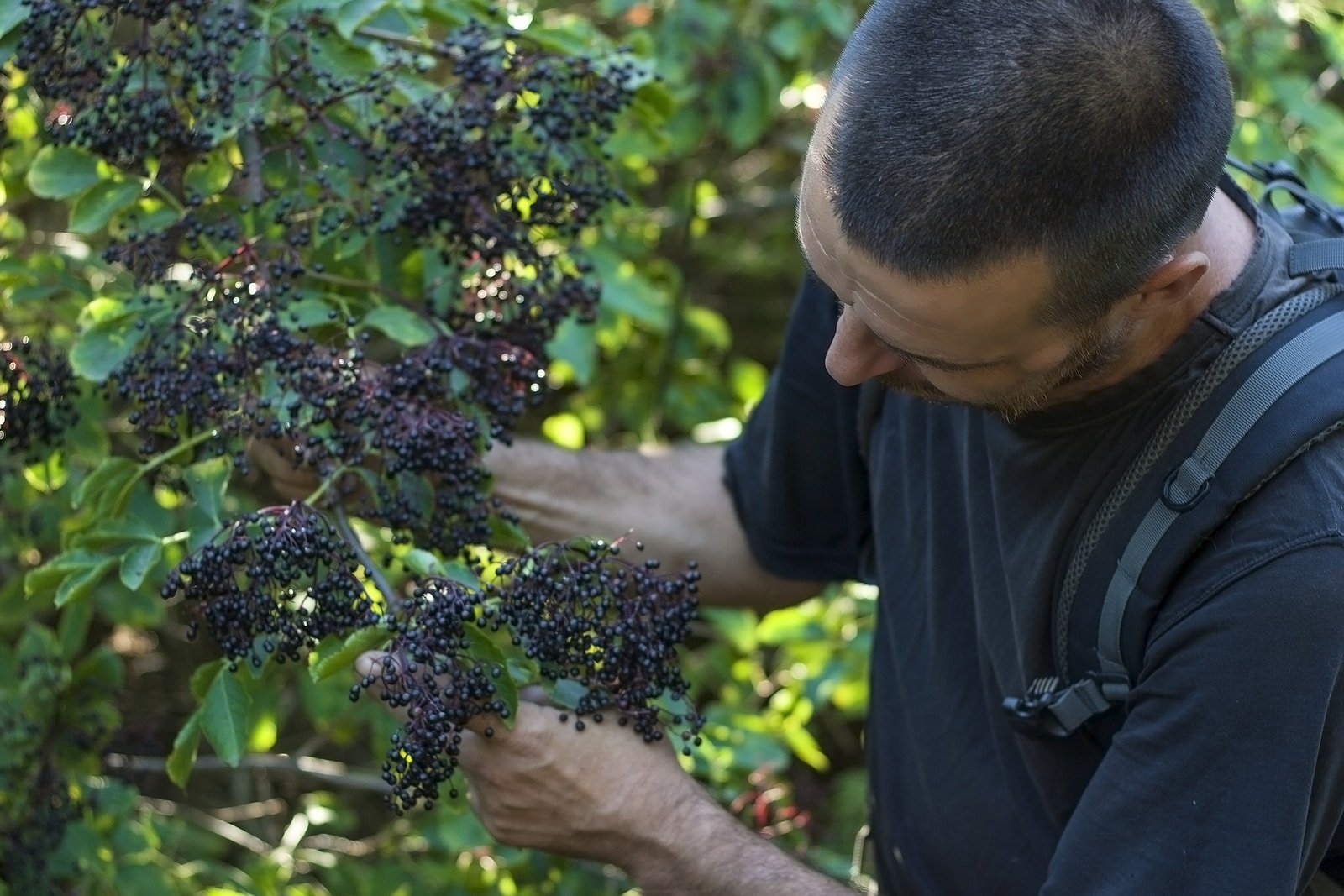
Wait for the berries to turn from green to a deep, near-black purple. Then, pick the whole umbel (bunch) at its base, snapping it off where it connects to the branch.
Gently remove the berries from the stems. You can pull them off by hand or use a fork to rake off clusters. Remove as many little stems and debris as possible before rinsing them off in a colander.
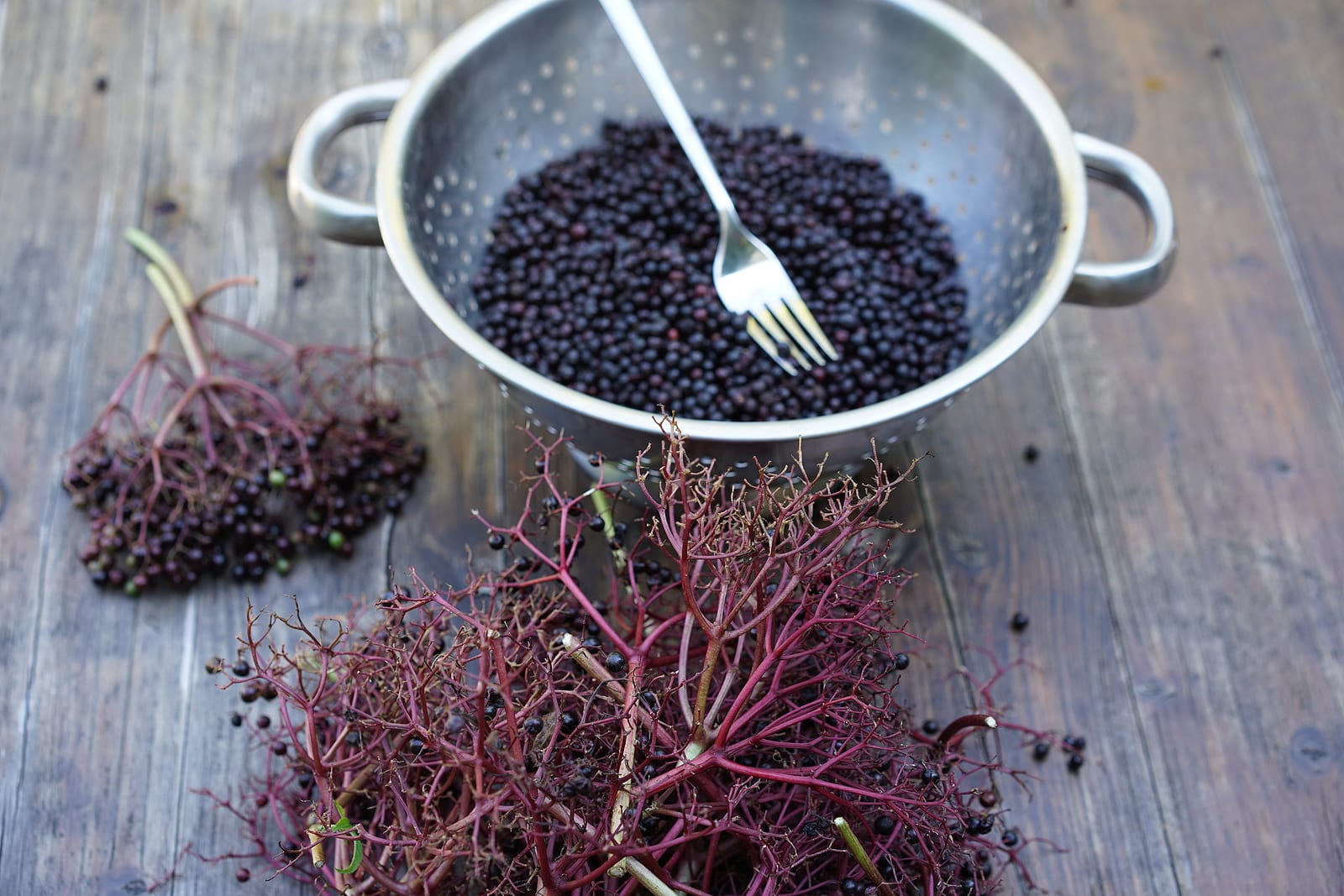
Once clean, the berries are ready to be dried, frozen, or cooked! Common uses for elderberries are syrup, tea, gummies, wine, and pie. There are a plethora of recipes available online to let you morph these powerful berries into something both potent and delicious.
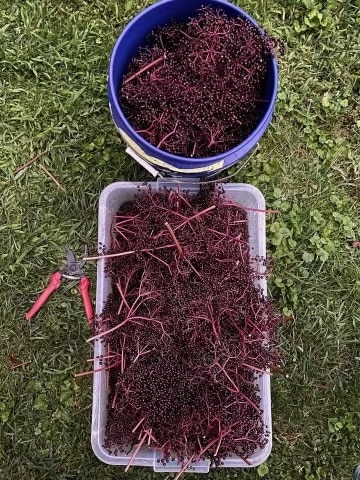
Elderberry crop at Hollow Creek Farm
Elderberry Products
To sample what Pennsylvania purveyors are making with elderberries, check out these products:
Northwest PA:
- Elderberry Pie and Flip by Art’s Bakery, Erie
- Elderberry Jelly by Byler’s Relish House, Saegertown
- Elderberry meads (variety) by Ironstone Meadery, Erie
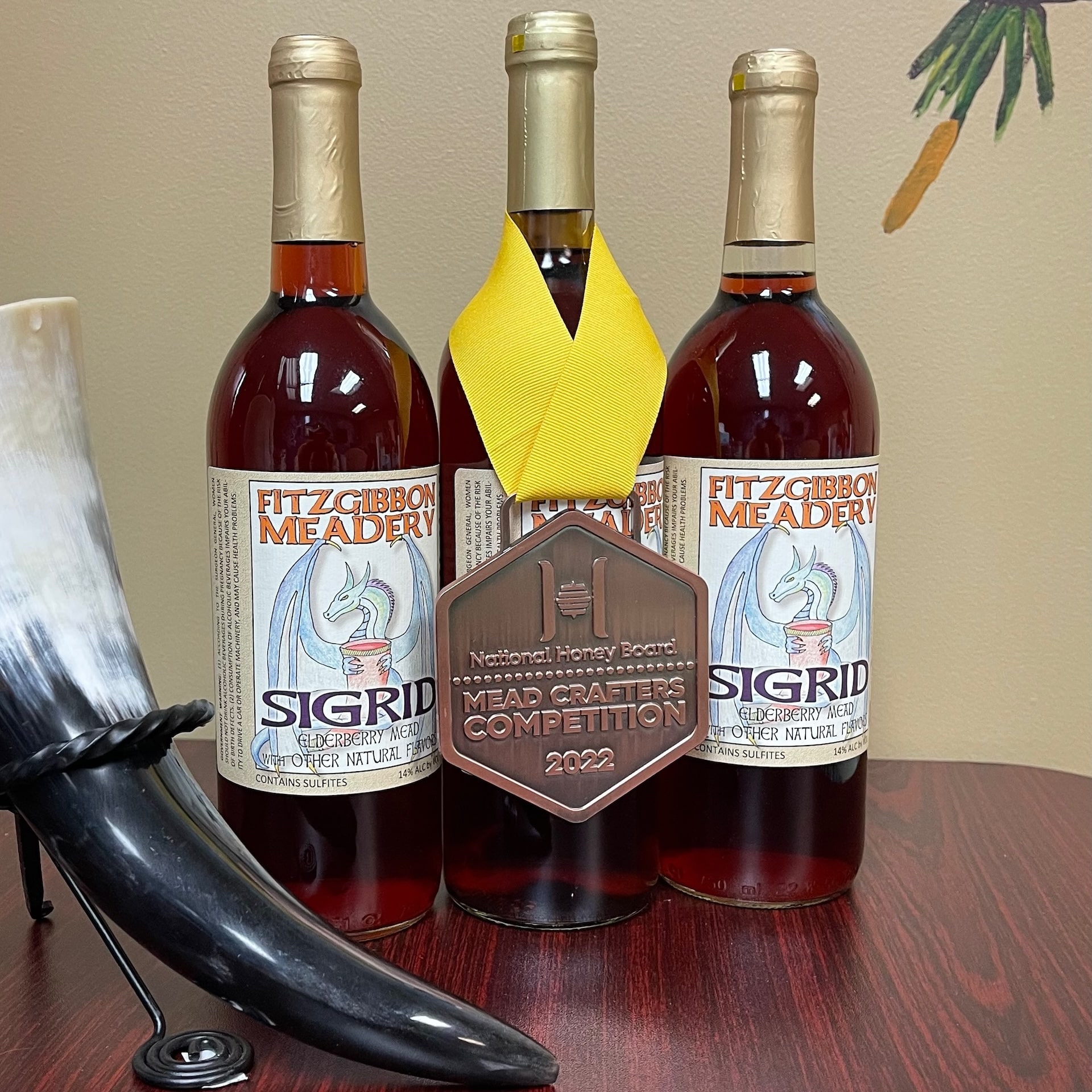
Sigrid Elderberry Mead by Fitzgibbon Meadery
Southwest PA:
- Elderberry Pie (by the slice) by Brady’s Restaurant, Acme
- Syrup, Iced Tea, Lemonade, Loose Leaf Tea by 4 Soils Farm, Pittsburgh
- Dried Elderberry for tea by Dobrá Tea, Pittsburgh
- Elderberry Wine by Mazzotta Winery, Gibsonia
- Sigrid Elderberry Mead by Fitzgibbon Meadery, Ellwood City
North Central PA:
- Elderberry Wine by Shade Mountain Winery & Vineyard, Middleburg
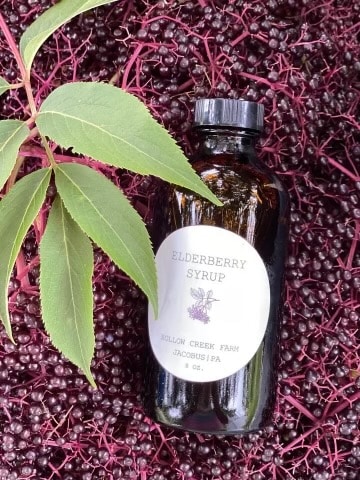
Elderberry syrup by Hollow Creek Farm
South Central PA:
- Pie, Syrup and Gummies by Hollow Creek Farm, York
- Elderberry Jelly by Miller’s Smorgasbord, East Ronks
- Elderberry Jelly by The Li’l Country Store and Miniature Horse Farm, Ronks
- Elderberry Spreadable Fruit by Brecknock Orchard, Mohnton
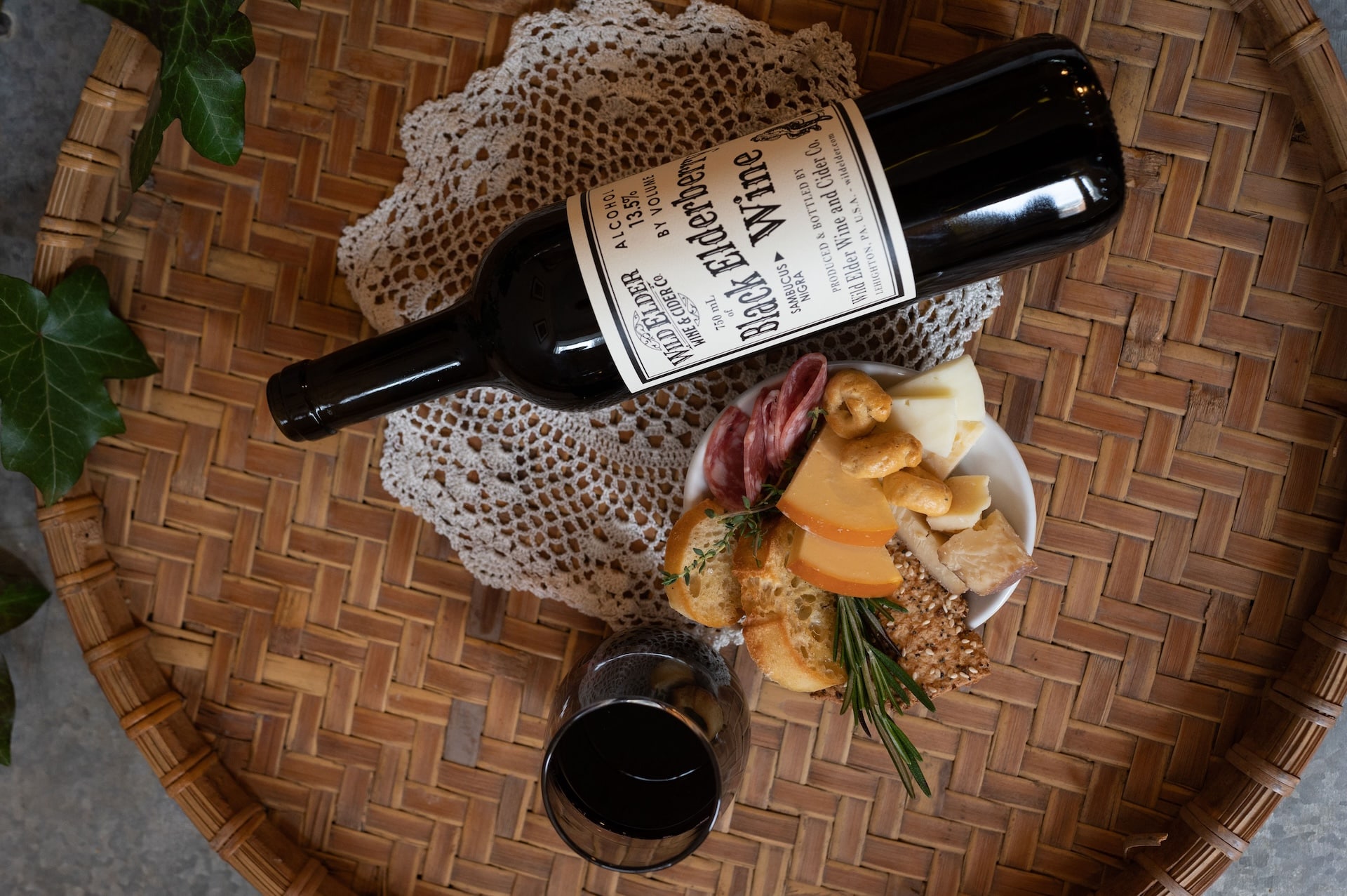
Black Elderberry Wine by Wild Elder Wine & Cider Co.
Lehigh Valley and NEPA:
- Elderberry Jam by Country Pleasures, Slatington
- Elderberry Syrup by Storms End Homestead, Jim Thorpe
- Elderberry Syrup and Elderberry Herbal Elixir by Gail’s Cupboard, Waverly
- Elderberry Wine and Cider by Wild Elder Wine & Cider Co., Jim Thorpe
- Elderberry Wine by Lucchi Family Wine Cellars, Scranton
SEPA:
- Syrup by Memmalu Elderberry, Aston
- Syrup elixir tea tincture by Mother Hylde, Pottstown
- Elderberry Syrup and Tea by Essentially Blessed Elderberry Syrup, Pottstown
- Syrup by Funny Farm Apiaries, Mertztown
- Syrup by Miller’s Apiary, Glenside
- Elderberry Tea Blend by Penn Herb Co., Ltd., Philadelphia
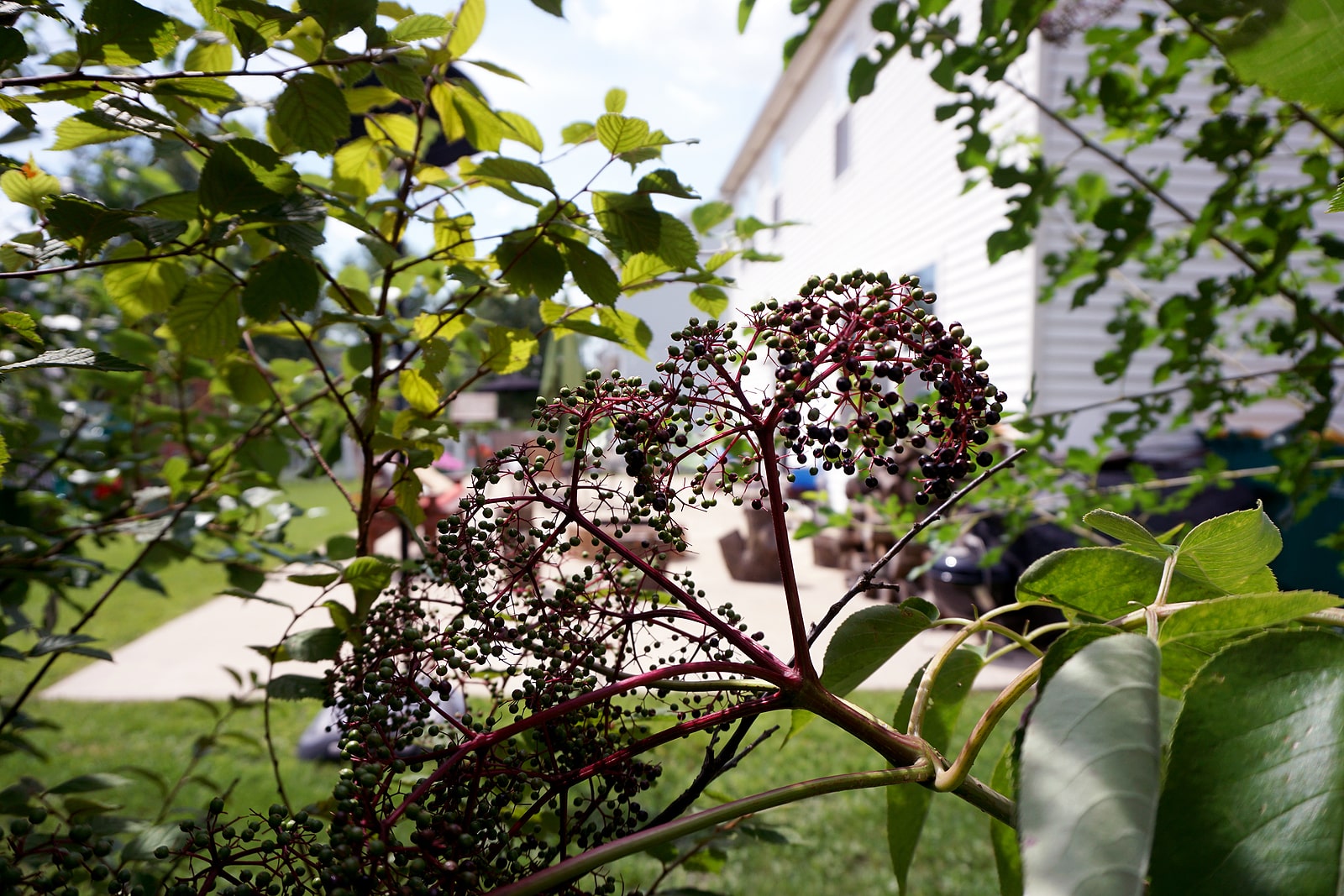
You might wish to buy and plant an elderberry all your own. If you’re looking for Pennsylvania elderberries, the native American black elderberry, Sambucus canadensis, is the way to go. Be aware that this shrubby tree can grow rapidly and with a wide circumference, so give it plenty of space to spread out. You might wish to buy your elderberry plant at a native nursery in Pennsylvania, where you’ll likely find support and resources to help your plant flourish. Here are nurseries across the state where you can purchase American black elderberries plants and seeds:
- Elderberry Seeds at Ernst Seeds, Meadville
- American black elderberry at Rich Farms, Smithfield
- American black elderberry at Perennial Gardens Nursery, New Bloomfield
- American black elderberry at Heartwood Nursery, Felton
- American black elderberry at Behmerwald Nursery, Schwenksville
- American black elderberry at Edge of the Woods Native Plant Nursery, Orefield
- American black elderberry and Red elderberry at Hungry Hook Farm, Bainbridge
Be sure to safely enjoy Pennsylvania elderberries, and let us know what recipes and products you most enjoy by commenting here or on our Facebook and Instagram pages.
For more foraging inspiration, check out the full Foraged in Pennsylvania series!
- Featured image: Bigstock
- Berries in buckets and gummy products: Hollow Creek Farm
- Black Elderberry Wine: Amber Tinsel
- All other photos: Bigstock
